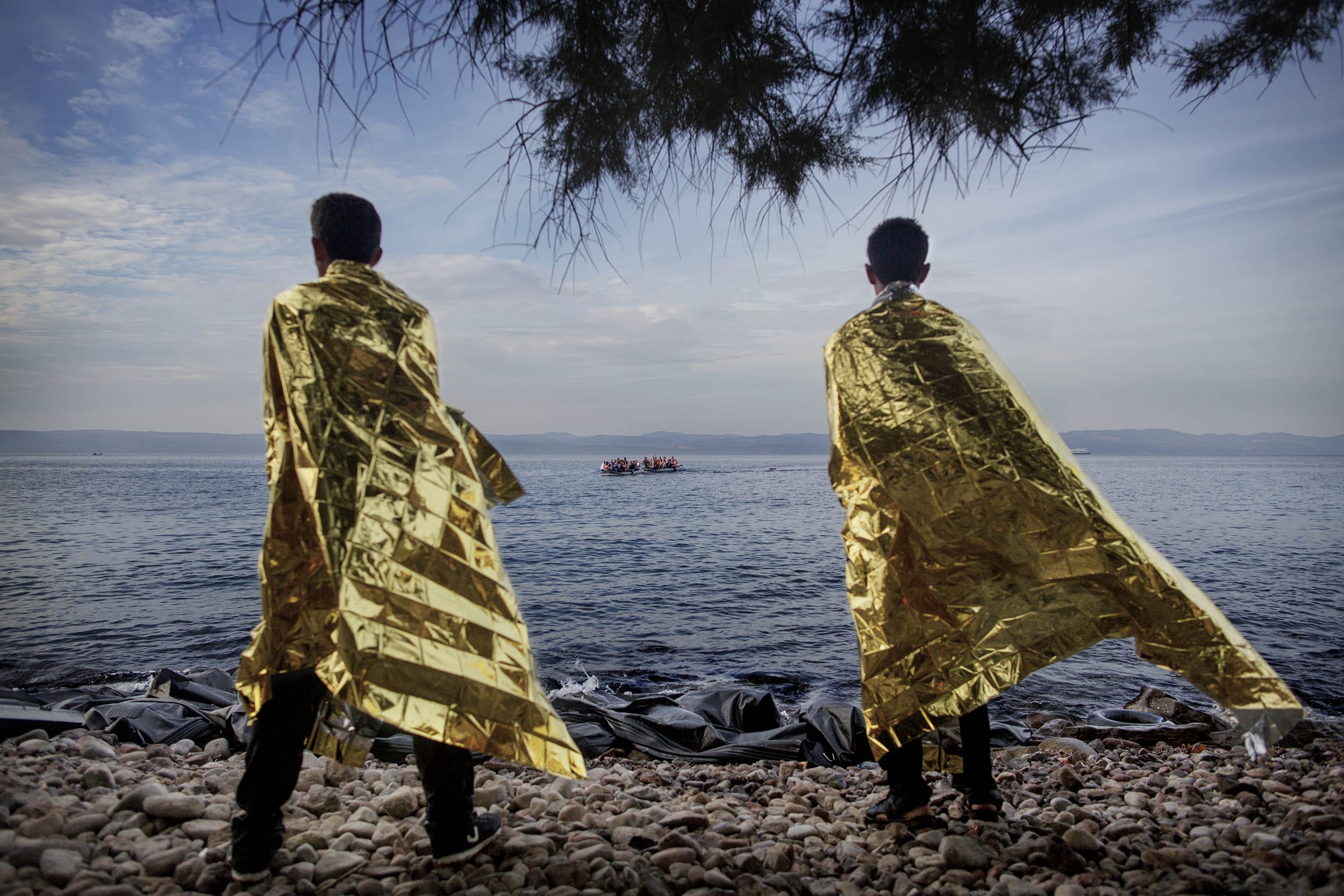Live
Talks
In his work Espen Rasmussen usually focuses on humanitarian issues and the challenges related to climate change. On his recent project, “The Longest Day”, he has been working since he went into isolation with his pregnant partner Julia and his kids on March 13. For two months, he followed his three kids and Julia towards giving birth during the lockdown in Norway. In his “very first personal project,” Espen Rasmussen produced intimate, atmospheric images of his life at home showing the mundane routines, insidious fear, and soul-stirring humanity of the coronavirus crisis coalesce. For our topic of the day “In Crisis Mode” Espen Rasmussen talked about “The crises on your doorstep – photographing and picture editing during Covid-19”.

Two men who have just arrived on the Greek island of Lesbos use foil blankets to get warm and dry as they watch two inflatable boats with Syrian refugees approaching the beach coming from the Turkish coast.

From the project ‘White Rage Europe’. Moscow, Russia. The temperature is below minus 30 degrees celcius, and the members of PPDM – Straight Edge Father Frost Mode – is icebathing in a park in Moscow. The group is a straight-edge-group promoting a healthy lifestyle. No smoking, no drinking and fight against the modern decay, take care of the classic family and the nation is part of their faith. Their trained bodies are covered with nazi tattoos as swastikas, SS-symbols, German soldiers and Norse mythology. In the spring of 2016 we start a year long journey trough some of the darkest places of Europe. Among fascists, nazis, muslim haters, nationalists and right wing populists in 14 countries. What drives them? Why do they hate?

From the project ‘Transit’. A Janjaweed militiaman on horseback close to the Chadian border. The Janjaweed (loosely translated as ‘devils on horseback’) have been terrorising the native population of Darfur since 2003.

From the project ‘The Longest Day‘, March 19, 2020. “I started to document my pregnant partner, Julia, on March 13, 2020, the first day we went into total isolation because of the Corona outbreak in Norway. Julia is pregnant and expecting to give birth on April 17, and we live together with my three children Milla, Fillip and Matheo, in our house outside Oslo. Julia is writing a diary about this new life; The fear, the unknown, how we handle to live three kids, me and Julia as pregnant together inside a house for many weeks. Because of the pregnancy, and because I have diabetes 1, we chose to completely self isolate. Shopping early in the morning at 07:00 once a week, the kids staying home with no contact with their friends, not leaving the house if not strictly necessary and strickt control of handwash. Together with my partners diary, this is a documentation about the journey towards giving birth under lockdown, the challenges and fears in a country that has resources to help their population.”
Session was hosted by VII Photo Agency.
All Live Talks are free of charge. But you can make a donation for the festival. Any sum is welcome. Please donate.

Espen Rasmussen (b. 1976) is based at Nesodden, close to Oslo, Norway. He is constantly working on his own photo projects. He is a member of VII and is a photo editor in VG, the largest daily newspaper in Norway. Espen has won numerous awards for his work, including three prizes from the World Press Photo, several in the Picture of the Year international (POYi) and 45 awards in the Norwegian Picture of the Year, including Photographer of the Year in 2015, 2016 and 2018 as well as the main prize, Picture of the Year in 2004 and 2016. In 2008 he was listed by Photo District News on the prestigeous PDNs 30 — New and Emerging Photographers to Watch.
In 2007, Espen received 60.000 dollar from the Freedom of Expression Foundation to continue his long-term project on refugees and IDPs around the world, which was published as the book TRANSIT in 2011, as well as a major exhibition. Rasmussen is freelance lecturing photography at schools such as the Oslo University College and Bilder Nordic school of Photography. He is also frequently giving presentations at photo festivals and for a wide range of other audiences. For the last nine years, he has been one of three editors/mentors in Norwegian Journal of Photography (NJP).
His work has been exhibited at the Nobel Peace Center (Oslo), The Humanity House (The Hague), UNHCR headquarter (Geneva) and Copenhagen Photo Festival, among other places. His work has appeared in magazines such as Time, Newsweek, National Geographic, Paris Match, L’Espresso, Der Spiegel and the Economist and newspapers such as The Guardian, The Sunday Telegraph and New York Times.
